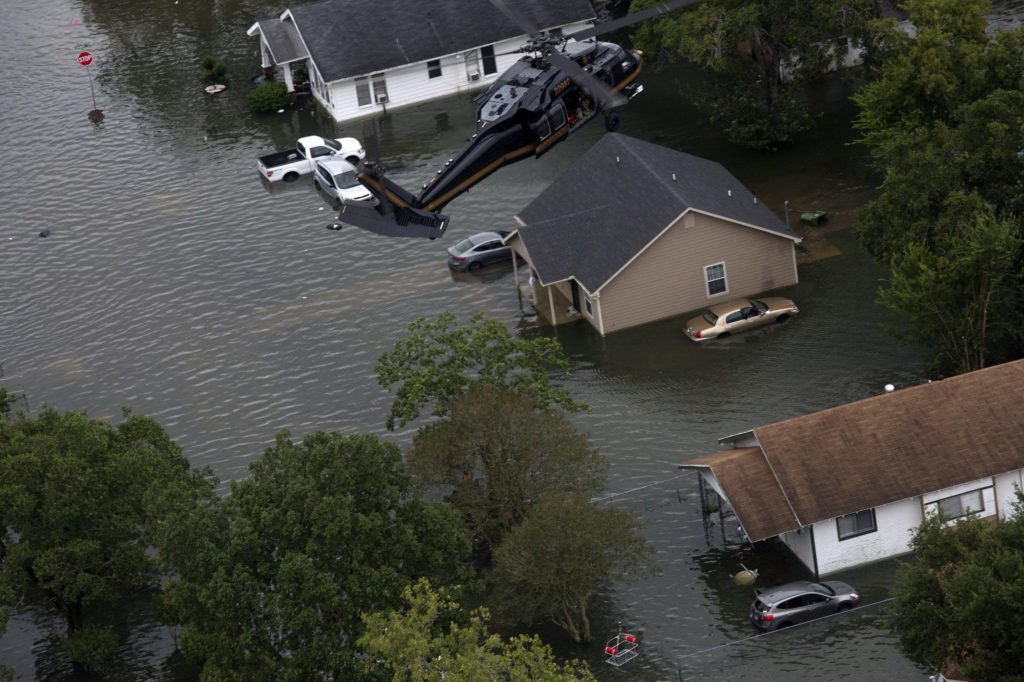Understanding the Risks of Insuring Commercial Property in Disaster-Prone Areas
Commercial property owners face unique challenges when insuring properties in disaster-prone areas. It’s crucial to understand the specific risks associated with such locations and how they can impact your property and business. In this section, we will delve into the various aspects of these risks and their implications.
Identifying Disaster-Prone Areas
Disaster-prone areas encompass a broad spectrum of environmental hazards, including earthquake zones, flood plains, tornado alley, and hurricane-prone regions. Understanding the specific characteristics of these high-risk areas is essential for property owners in mitigating potential threats. By recognizing these patterns, property owners can proactively assess their vulnerability and take appropriate measures to safeguard their investments.
It’s also imperative to provide statistics and examples of high-risk areas to illustrate the prevalence and severity of disasters in these locations. By highlighting real-world scenarios and data-driven insights, property owners gain a deeper understanding of the potential threats they face.
Assessing the Impact of Disasters on Commercial Property
Disasters have the potential to inflict substantial damages and losses on commercial properties. From structural damage to business disruptions, the aftermath of a disaster can have far-reaching consequences. Detailing the potential damages and losses that disasters can cause to commercial properties provides property owners with a clear perspective on the risks they need to safeguard against.
Furthermore, it’s crucial to explain the financial implications and business disruptions caused by disasters. By outlining the potential financial burden and operational setbacks resulting from disasters, property owners can grasp the broader impact on their assets and business continuity.
Understanding the risks associated with disaster-prone areas provides a solid foundation for formulating effective risk management strategies and insurance coverage. By acknowledging the challenges and potential ramifications, property owners can make informed decisions to protect their commercial properties from unforeseen disasters.
Types of Insurance Coverage for Disaster-Prone Areas
Understanding the unique vulnerabilities of commercial properties in disaster-prone areas necessitates specific insurance coverage tailored to mitigate these risks. Let’s delve into the various types of insurance that cater to the distinct challenges posed by high-risk locations.
Types of Insurance Coverage for Disaster-Prone Areas
Insuring commercial properties in disaster-prone areas requires a comprehensive understanding of the insurance coverage options available to mitigate potential risks effectively. Let’s explore the key types of insurance designed to address the specific challenges posed by high-risk locations.
Property Insurance
Property insurance serves as the cornerstone of comprehensive coverage for commercial properties in disaster-prone areas. It’s essential to break down the coverage options available within property insurance to provide property owners with a clear understanding of the protection it offers.
Coverage Options: Discuss the various components of property insurance, including coverage for buildings, equipment, inventory, and other physical assets. Highlight the importance of comprehensive coverage to safeguard against a wide range of potential damages.
Inclusion of Natural Disasters: Delve into the specifics of how natural disasters, such as earthquakes, floods, tornadoes, and hurricanes, are incorporated into property insurance policies. Provide insights into the extent of coverage for these disaster scenarios.
Examples of Coverage Scenarios: Illustrate real-world examples of property insurance coverage scenarios in disaster-prone areas to demonstrate the practical application of this insurance type. Highlight how different scenarios are addressed under property insurance, emphasizing the relevance to high-risk locations.
Business Interruption Insurance
Incorporating business interruption insurance into the insurance portfolio for commercial properties in disaster-prone areas is crucial for ensuring comprehensive protection against financial losses resulting from temporary closures post-disaster.
Financial Recovery: Explain how business interruption insurance aids businesses in recovering from financial losses due to temporary closure post-disaster. Emphasize the role of this insurance in stabilizing the business operations during the recovery phase.
Scope of Coverage: Detail the scope of coverage offered by business interruption insurance, including aspects such as lost revenue, ongoing expenses, and additional costs incurred during the recovery period. Highlight the significance of a broad coverage scope to address diverse business interruption scenarios.
Importance in Disaster-Prone Areas: Discuss the particular relevance of business interruption insurance in disaster-prone areas, where the likelihood of operational disruptions is heightened. Provide examples of how businesses in high-risk locations can benefit from the coverage provided by this insurance type.
Understanding the intricacies of these insurance coverage options equips property owners with the knowledge to make informed decisions in safeguarding their commercial properties against potential disasters.
Mitigating Risks and Preparing for Disasters
Mitigating Risks and Preparing for Disasters
Mitigating risks and proactively preparing for potential disasters are essential components of safeguarding commercial properties located in disaster-prone areas. By implementing strategic risk mitigation measures and establishing comprehensive disaster preparedness plans, property owners can significantly enhance the resilience of their assets against unforeseen events.
Risk Mitigation Strategies
Implementing effective risk mitigation measures tailored to the specific challenges posed by disaster-prone areas is paramount for reducing vulnerabilities and minimizing potential damages.
Building Modifications: Discuss the importance of fortifying structures against common hazards prevalent in disaster-prone areas, such as reinforcing buildings to withstand earthquakes or windstorms.
Impact-Resistant Materials: Highlight the significance of utilizing impact-resistant materials in construction and renovations to enhance the structural integrity of commercial properties.
Emergency Preparedness Plans: Offer guidance on formulating and implementing comprehensive emergency preparedness plans that encompass evacuation protocols, emergency supplies, and communication strategies to ensure the safety and well-being of occupants during a disaster.
Disaster Preparedness Plans
Having a well-defined disaster preparedness plan is crucial for effectively responding to and managing the aftermath of disasters. It involves meticulous planning and coordination to mitigate risks and expedite recovery efforts.
Comprehensive Planning: Emphasize the importance of developing a holistic disaster preparedness plan that encompasses various disaster scenarios, response protocols, and resource allocation strategies.
Key Components: Detail the essential components of a preparedness plan, including establishing clear evacuation routes, stockpiling emergency supplies, and establishing effective communication channels for dissemination of critical information during emergencies.
Testing and Training: Advocate for regular drills and training sessions to ensure readiness and familiarize stakeholders with the proper execution of the preparedness plan.
By focusing on proactive risk mitigation and robust disaster preparedness, property owners can substantially enhance the resilience of their commercial properties in disaster-prone areas, mitigating potential damages and ensuring the safety of occupants and assets.
Strategic Insurance Considerations for Disaster-Prone Areas
Strategic Insurance Considerations for Disaster-Prone Areas
When it comes to insuring commercial properties in disaster-prone areas, strategic insurance considerations play a pivotal role in providing comprehensive coverage and minimizing potential risks. Property owners must navigate various aspects of insurance to ensure adequate protection against the unique challenges posed by high-risk locations.
Choosing the Right Insurance Provider
Selecting an insurance provider experienced in covering properties in high-risk areas is paramount for ensuring tailored and effective insurance solutions.
Expertise in High-Risk Areas: Provide tips on identifying insurance companies with a proven track record in insuring properties within disaster-prone regions. Emphasize the significance of partnering with providers well-versed in managing the specific risks associated with these areas.
Financial Stability and Claims Processing Efficiency: Discuss the importance of evaluating the financial stability of insurance providers and their efficiency in processing claims, particularly in the aftermath of a disaster. Highlight the need for timely and reliable claims processing to facilitate swift recovery.
Policy Review and Adjustments
Regularly reviewing and adjusting insurance policies is essential, especially for properties in disaster-prone areas, to ensure comprehensive coverage aligned with potential risks and property value.
Significance of Regular Policy Reviews: Explain the significance of conducting periodic policy reviews to assess the evolving risk landscape and to make necessary adjustments to coverage.
Ensuring Adequate Coverage: Highlight the importance of ensuring that insurance coverage is commensurate with the potential risks specific to the disaster-prone location and the current value of the property. Emphasize the need to avoid underinsurance, which can lead to significant financial repercussions in the event of a disaster.
By carefully considering these strategic insurance considerations, property owners can fortify their commercial properties against potential risks and mitigate the financial impact of disasters.
Expert Advice and Resources for Insuring Commercial Property in Disaster-Prone Areas
Expert Advice and Resources for Insuring Commercial Property in Disaster-Prone Areas
Navigating the complexities of insuring commercial properties in disaster-prone areas often necessitates expert guidance and access to valuable resources. By seeking professional advice and leveraging insightful resources, property owners can make informed decisions and fortify their properties against potential risks effectively.
Seeking Professional Guidance
Consulting insurance brokers or risk management specialists can provide invaluable insights and tailored advice to navigate the intricacies of insurance options for disaster-prone areas.
Specialized Expertise: Highlight the expertise of insurance brokers and risk management specialists in assessing and addressing the unique risks prevalent in disaster-prone areas. Emphasize the value of leveraging specialized knowledge for tailored insurance solutions.
Customized Recommendations: Discuss how seeking professional guidance can result in personalized insurance recommendations aligned with the specific needs and vulnerabilities of a property in a disaster-prone location, ensuring comprehensive coverage.
Resource Recommendations
Accessing pertinent resources is instrumental in gaining a comprehensive understanding of disaster preparedness, risk mitigation, and insurance coverage specific to high-risk areas.
Government Agencies: Share the importance of leveraging resources provided by government agencies tasked with disaster management and preparedness. Highlight the availability of informational materials and guidance for property owners.
Industry Reports: Recommend utilizing industry reports and publications offering insights into best practices for insuring properties in disaster-prone areas. Emphasize the relevance of staying informed about industry trends and evolving risk landscapes.
Disaster Preparedness Guides: Provide recommendations for utilizing disaster preparedness guides tailored to commercial properties, offering practical advice on fortifying assets and ensuring business continuity in the face of disasters.
By tapping into expert advice and valuable resources, property owners can bolster their preparedness and insurance coverage, fostering resilience and protection against the potential impact of disasters in high-risk areas.
Conclusion
Insuring commercial properties in disaster-prone areas demands a multifaceted approach that encompasses understanding the risks, securing adequate insurance coverage, and implementing proactive risk mitigation measures. By comprehensively assessing the impact of disasters, exploring varied insurance options, and leveraging expert advice and resources, property owners can fortify their assets against potential vulnerabilities.
In summary, staying informed and proactive in addressing the challenges associated with disaster-prone areas is essential for ensuring the long-term stability and resilience of commercial properties. Through strategic planning and leveraging expert guidance and valuable resources, property owners can navigate the complexities of insuring their properties effectively and mitigate potential risks, fostering a secure and sustainable business environment even in high-risk locations.







